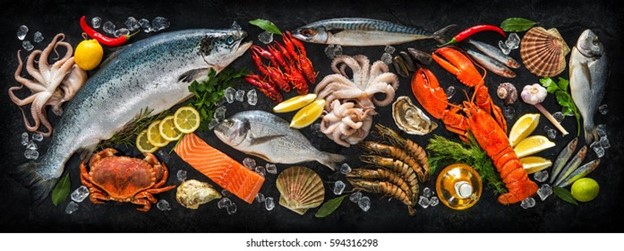Assays for On-Site Identification of Seafood
- Patent Pending
The FDA's DNA barcoding method is the gold standard method for identifying seafood species. This method involves shipping samples to testing laboratories. The testing can take from 5 – 10 days and cost $100 - $200 per sample. This method is expensive, time-consuming, highly susceptible to tissue contamination during sample collection and provides detailed information regarding fish species. However, those in the wholesale/retail fish market don’t necessarily wants all the information generated by the DNA barcoding, they only care about whether or not the particular seafood species they’ve purchased or are interested in purchasing is the same species as mentioned on the label (a simple yes/ no answer). There is a need in the industry for a low-cost, rapid assay to discern whether a certain sample is the same seafood species as mentioned on the label or not. Furthermore, there is a need for a method that can be performed onsite, at an in-house food processing facility, in a resource limited setting, using a minimally trained labor.
Our assay is a method that rapidly determines if a specific food product is present or not, the method comprising: providing a sample comprising at least one target sequence; placing the sample into at least one container; using reagents to amplify a sample; amplifying a sample using a small footprint nucleic acid amplification device, wherein the sample is amplified by exposing it to different sets and types of primers (conventional and rhPCR primers) in conditions suitable for nucleic acid amplification, where each set of primers comprises of a forward and reverse primers; exposing the amplified sequence to a means of detection, wherein the means of detection provides a present/not present result; and identifying whether the food or ingredient is present or not, based on the results.


